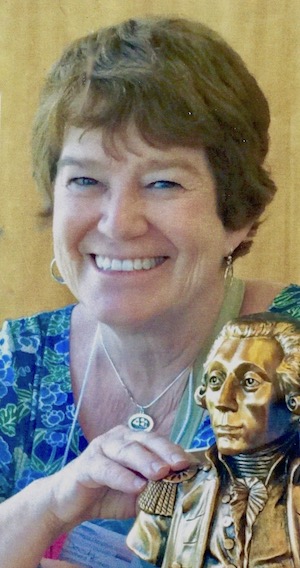In the 1970s, we lived for five years in Wayne, PA, outside Philadelphia. (Wayne, BTW, was named after "Mad" Anthony Wayne, a Pennsylvanian who served in the Revolution War with distinction and was quite a colorful character, apparently.) Our sons learned to ride bikes at Valley Forge, and our family often visited Brandywine Battlefield and historic sites in Philadelphia. We especially liked eating lunch at the City Tavern. (More about that later.)
A couple we knew while we lived there had a horse farm they named "Penncroft Farm". Their house was built in the antique Pennsylvania style, with different sections that had differing exterior finishes.
After we moved to Minnesota in 1981, I did not want my kids to forget the history we had experienced while living in Pennsylvania. Very soon after that, I started writing a story about a boy who moved from Minnesota to Pennsylvania. I needed a name for the farm where he and his family were to make their new home. I wanted it to sound a bit exotic to the Minnesota boy, and reflect the Pennsylvania location. Then I remembered the name of our friends' place and borrowed its name: "Penncroft Farm". It took me a long time to write (and to find a publisher) but
The Riddle of Penncroft Farm was released in 1989 by Harcourt.
After we moved to New Hampshire in 1991, my then 11 year-old daughter and I went back to Pennsylvania to see some old friends. We took the opportunity to visit some of the places that I had put into
The Riddle of Penncroft Farm when I was living a thousand miles away.
Here is the "original" Penncroft Farm. (I wouldn't be able to find it today. Our friends moved away from there just after we did in the early 80s, and now I don't remember where it was.)
Here is how I described the fictional Penncroft Farm in the book:
The headlights picked out a crooked wooden fence and a post with a sign in spiky, old fashioned
letters. “‘Penncroft Farm,’” I read out loud. “‘Established 1760.’”
Dad eased the car around the corner and started up the driveway. “Don’t even think of
skateboarding down this, Lars,” he said. “There’s quite a drop-off on the other side of the pike.
You’d break a leg if you went off it, and maybe your neck.”
“It’s too rutted for skateboarding anyway, Dad,” I replied. Then, as we jounced up the long,
steep driveway, I stuck my head out the window to check out my new home.
Even by moonlight I could tell that it was different from any house I’d ever seen. It looked as if
someone hadn’t been able to decide what sort of house he wanted, so he’d hooked several
kinds together. There were dark, bumpy stones on the middle part, but the left section was
shingled like our old Minnesota house; the right was covered with white stuff."
-
The Riddle of Penncroft Farm © 1989 Dorothea G. Jensen
Here is the cover art done by Gary Lippincott for the back of the original hardcover edition of
The Riddle of Penncroft Farm. As he apparently grew up near the location of my story, he knew exactly what colonial houses of that region looked like. I've always liked this picture, except for the fact that the driveway goes UPHILL.
Lars would have had a hard time skateboarding "down" it except by pretty tricky maneuvering!
















